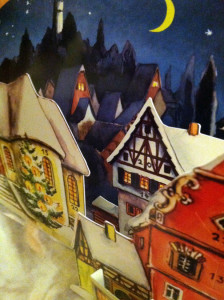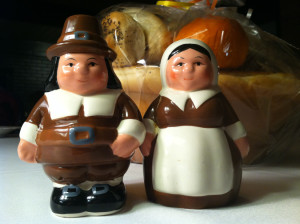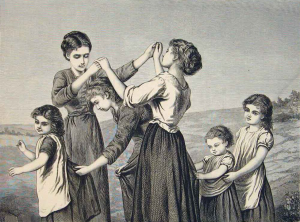It is the First Sunday of Advent, and here begins our time of preparation for Christmas. I write this tonight from Chicago, where we’ve been visiting family since before Thanksgiving. 41.8369° North in latitude, which is more than 15 degrees further north than our home in Lake Worth. Darkness falls much earlier here; the increase in darkness is much more apparent, the cold weather more extreme. We awoke on our first morning to a land covered in snow. Here, there is no doubt of midwinter’s approach.
Advent itself is a season of the Church. It is a time of preparation for Christmas much like Lent prepares us for Easter, and in earlier days it was a time of fasting, just as Lent is. It began back then on the 12th of November, the day after Martinmas, the day after our time of remembering the dead, which had begun with Halloween, had just come to a close. This aspect of Advent is now in the past. But the value of Advent is clear even if your Christmas celebration is not one based in religion. It matters not whether we are celebrating the birth of the Christ child or the triumph of light over darkness at the solstice. In either scenario, Advent has its place, for to speak of joy and peace at Christmas seems a bit disingenuous without first setting the stage for needing those gifts, and this is where Advent comes in: Advent humbles us, opens our hearts to this need. Advent provides us a time to make amends, to right wrongs, to repair relationships, to make our house fair as we are able. The days are dark. Advent prepares us for the coming light of the child, of the returning sun.
Over the centuries, many beautiful ways of expressing this have come about. There are many old old songs for this time of year that are not the songs you’ve been hearing in stores for weeks by now. These songs tend to be darker and more reflective. (The Benedictines of Mary have released one of the best collections of music for the season, called Advent at Ephesus. I highly recommend it.) Candles are naturally a big part of the traditions of Advent, too, for their symbolism is clear. Tradition would have us build a ring of four candles, three purple and one rose. On the First Sunday of Advent, which is tonight, we would light the first purple candle. Come the night of the Second Sunday, we light two purple candles. On the Third Sunday, we light those same two purple candles and the rose candle, and on the Fourth Sunday, not long before Christmas, all four candles are lit––as the nights grow increasing darker on the approach to the Midwinter Solstice, we respond with increasing light in our homes and in our hearts.
More secular approaches to Advent include a daily candle that is lit for an hour each day. At our home, we light ours each night at the table with dinner beginning on the First of December. When the candle is nearly done, Christmas has arrived. This tradition is related to the German tradition of the Advent calendar, which is probably the most familiar of Advent traditions. My first Advent calendar was given to me by my sister in 1973. The glitter and sparkle of the nighttime winter scene captured my imagination and I kept that calendar, along with every one I’ve had over the years. It is this same magic that has inspired much of what Convivio Bookworks is all about, and this is a large part of why we sell the things we sell, because I love sharing that magic with you, too.
We want Christmas to be magical for our kids and for ourselves, and Advent is, to me, key to that magic. It’s all about taking things slowly, all about setting the pace, setting the stage. We open our hearts and minds to possibility; we become light bearers in a time of increasing darkness.
Image: close up view of one of the many traditional German Advent calendars we sell at our website. This one was originally printed in 1955. Seth and I brought it to my aunt’s house in Illinois to help her and my cousins prepare for Christmas once we head back home.


